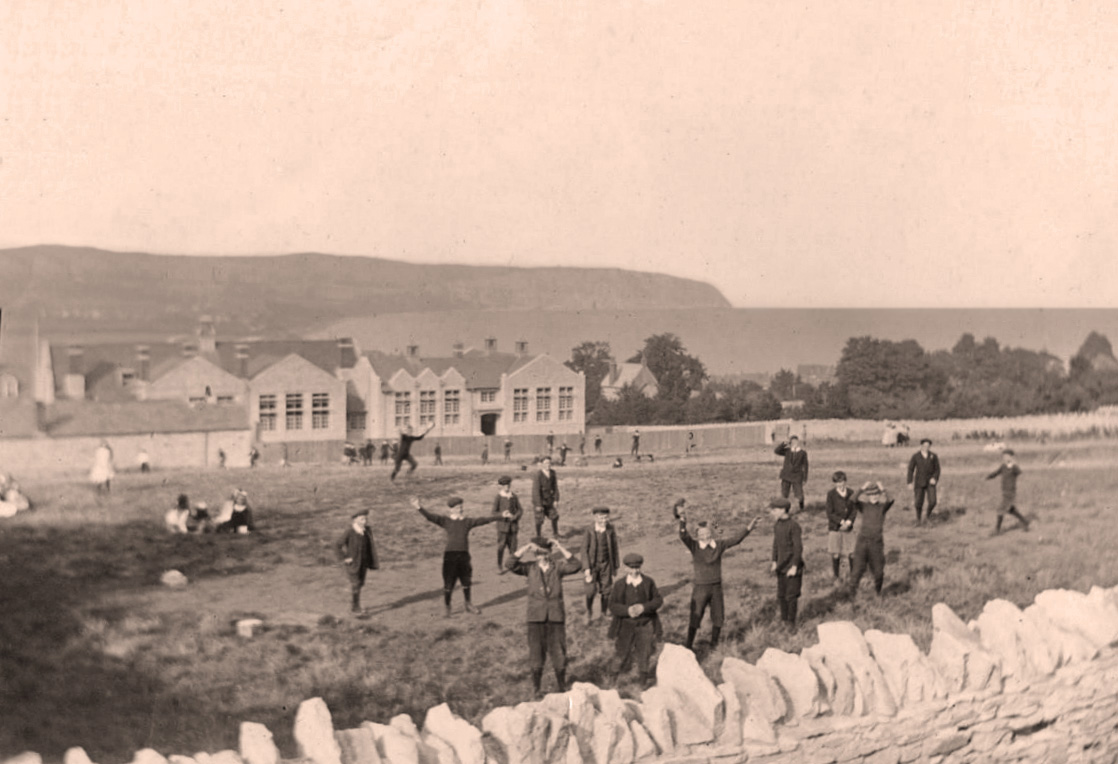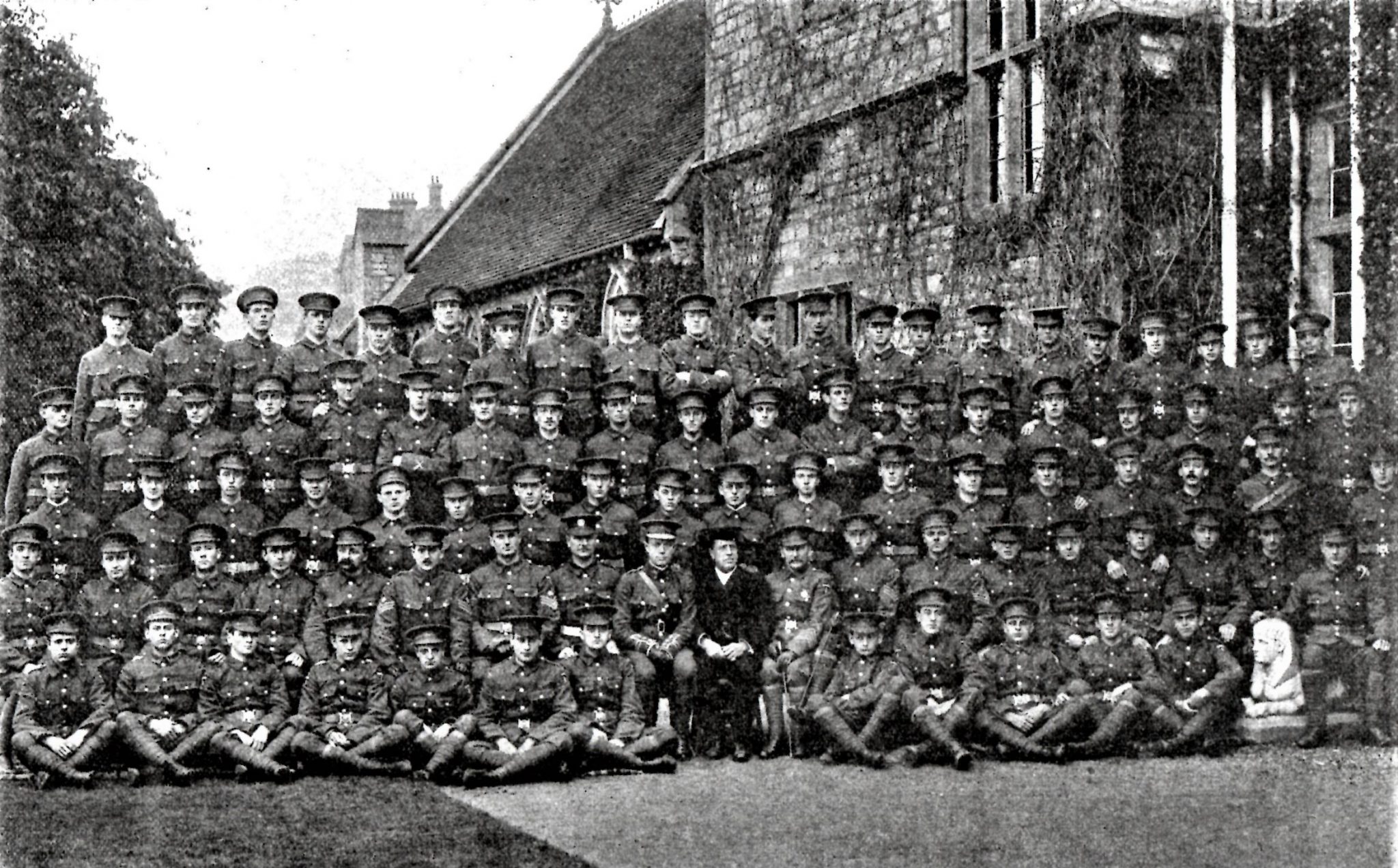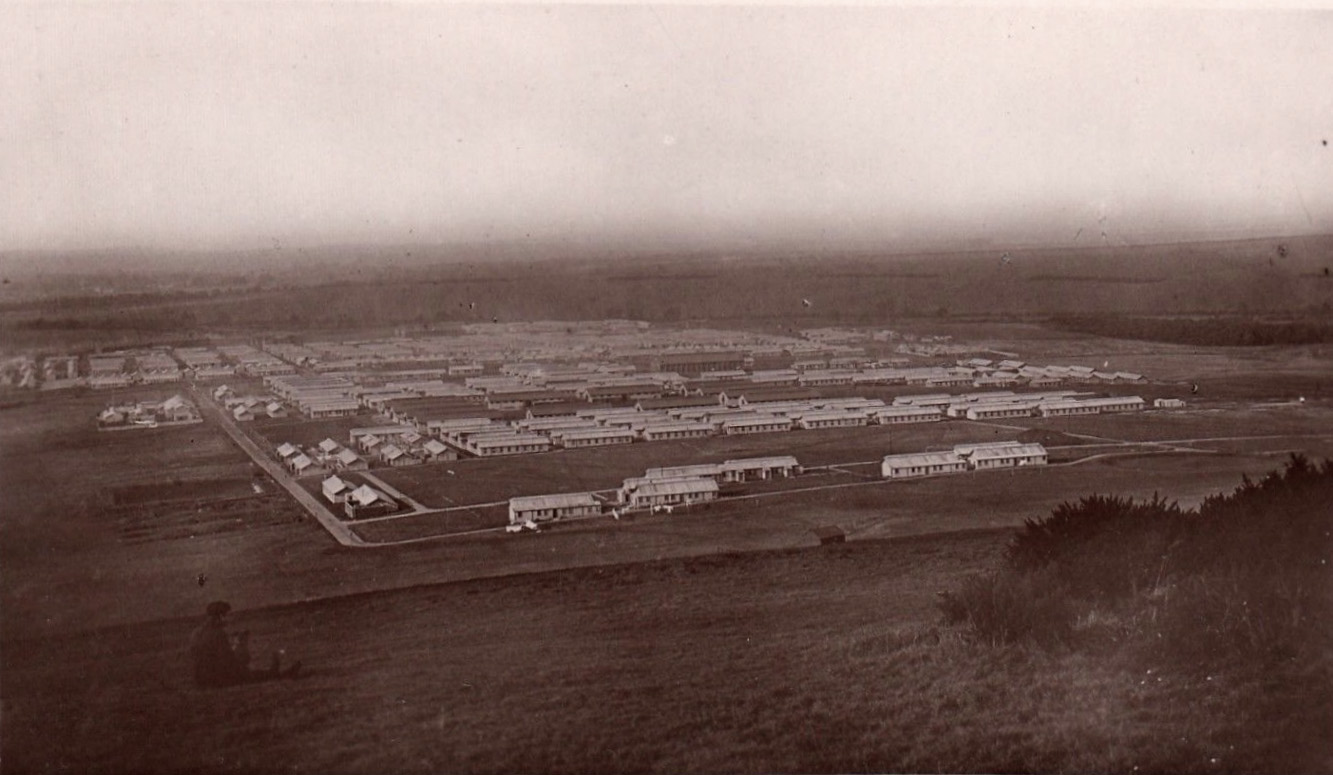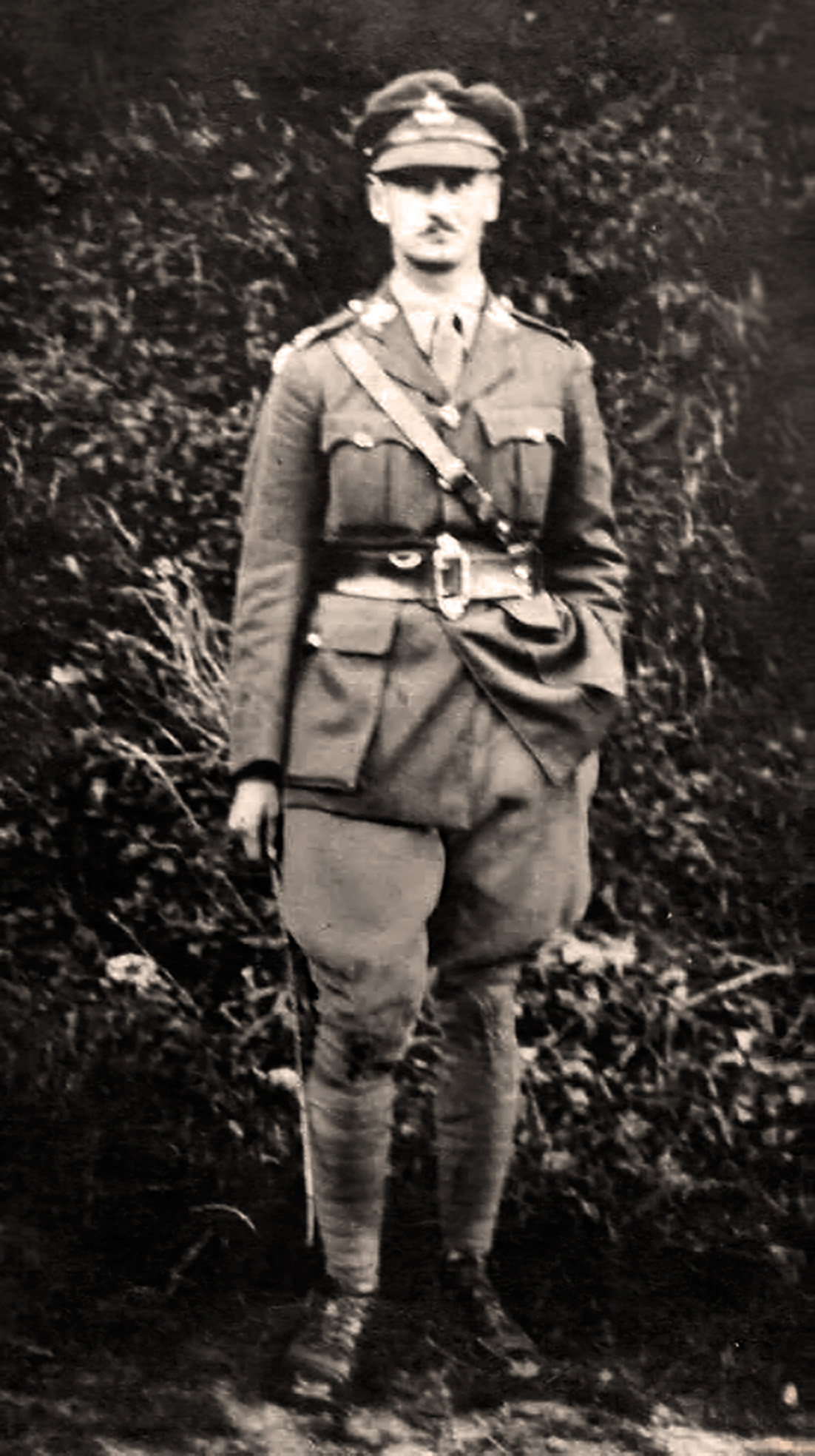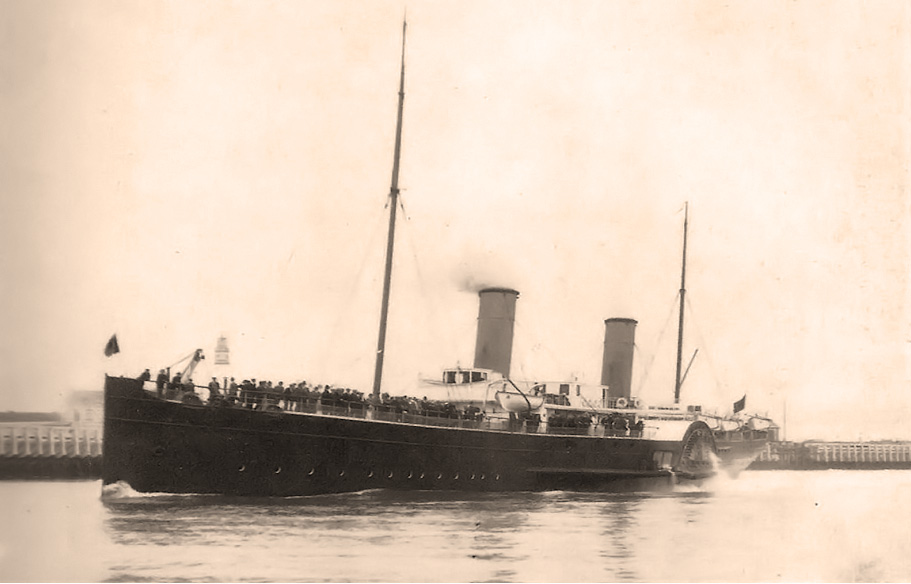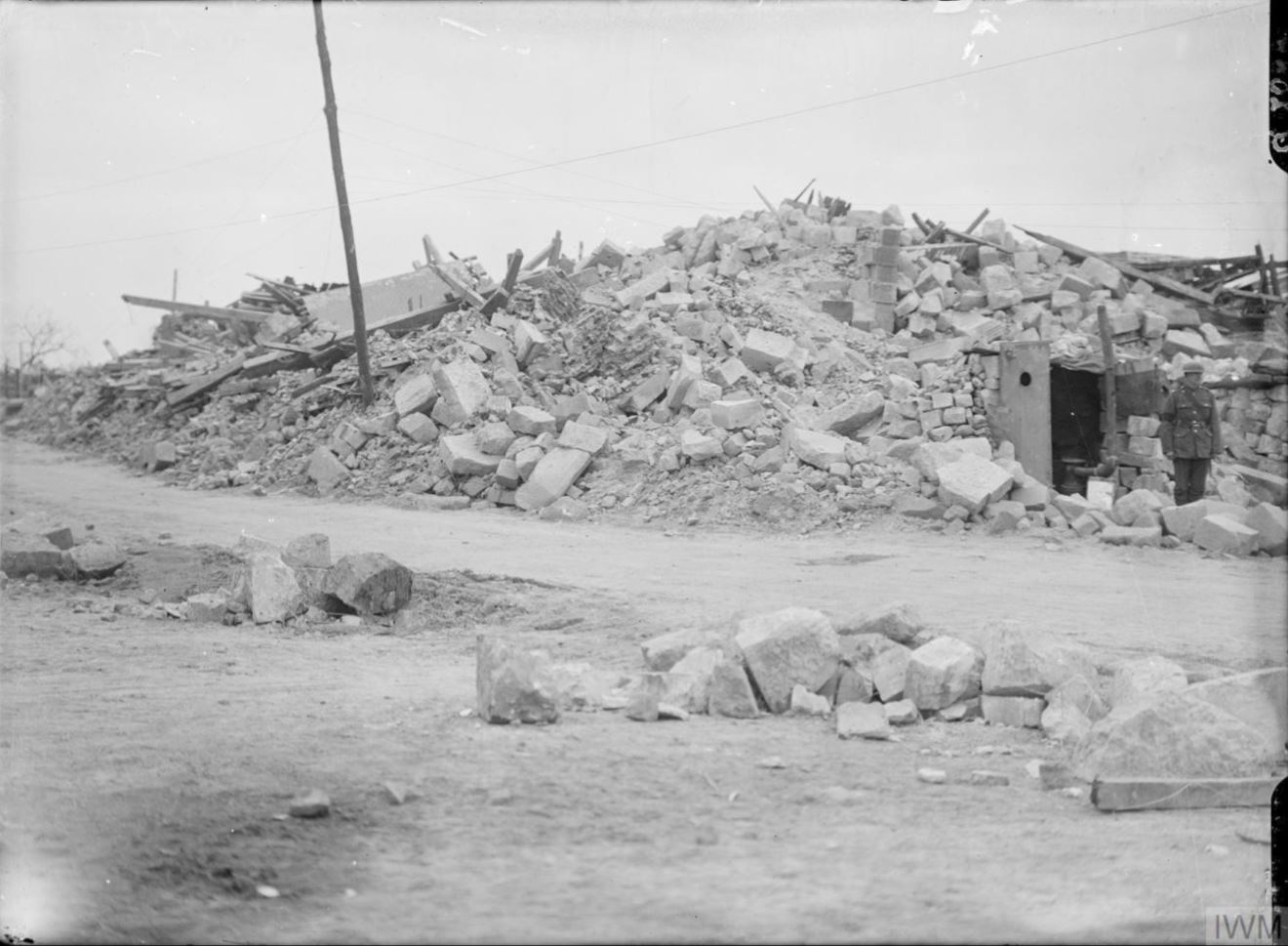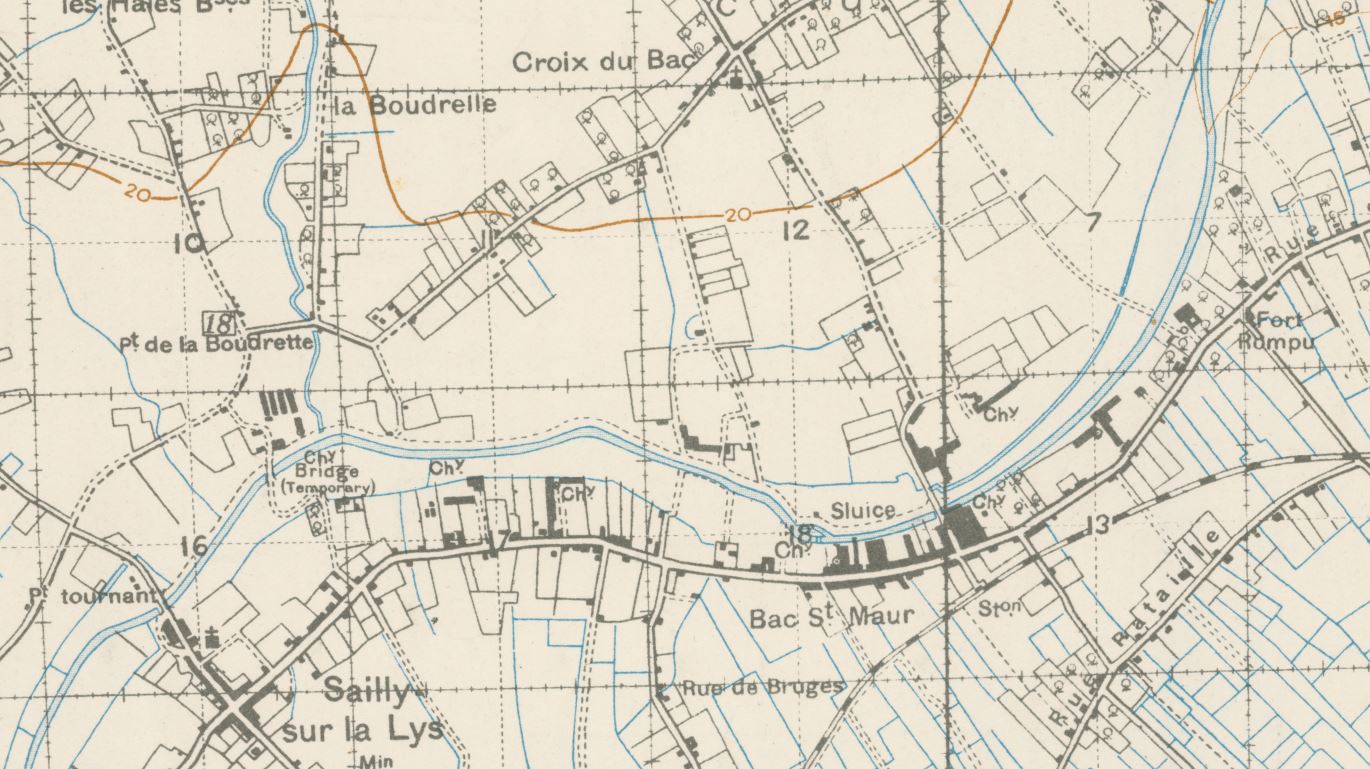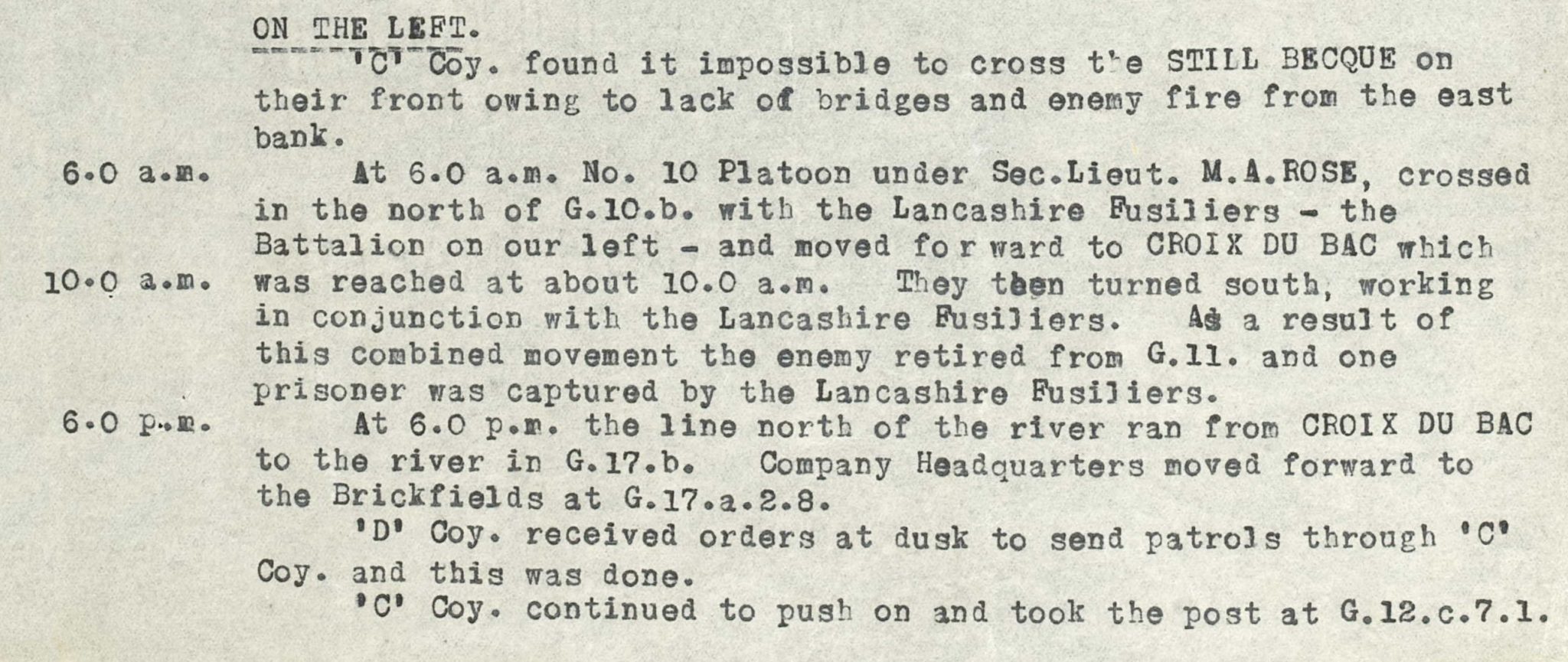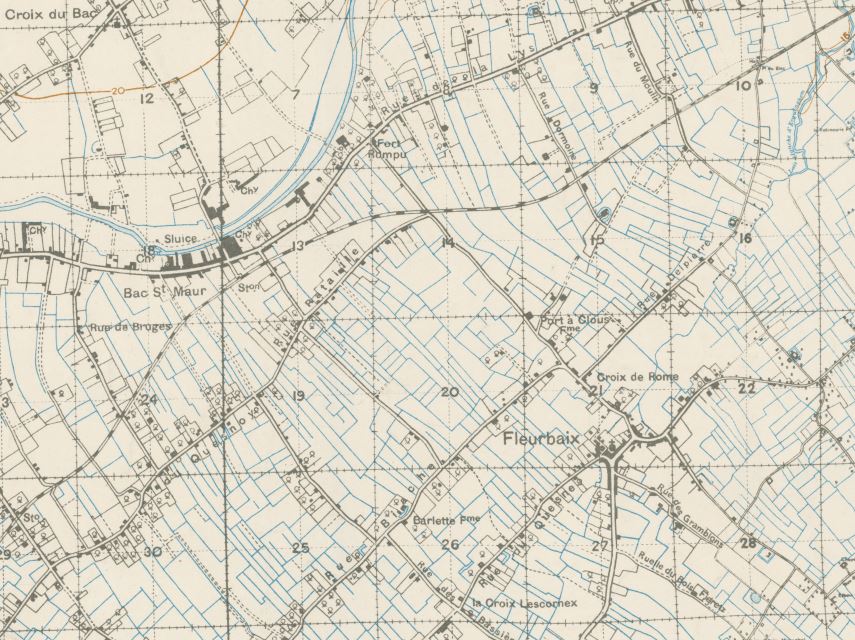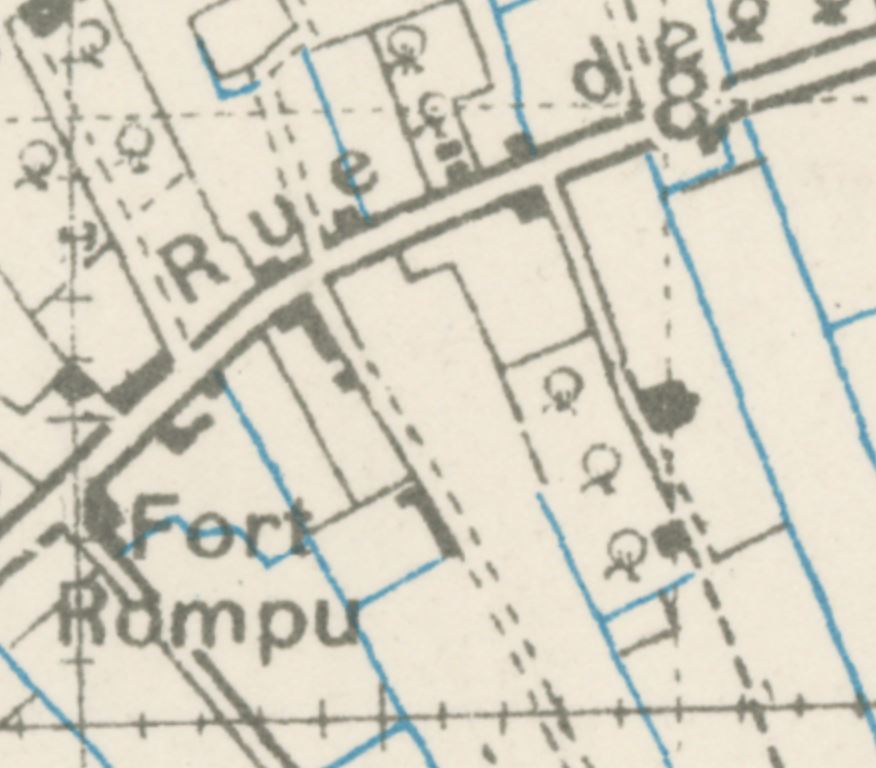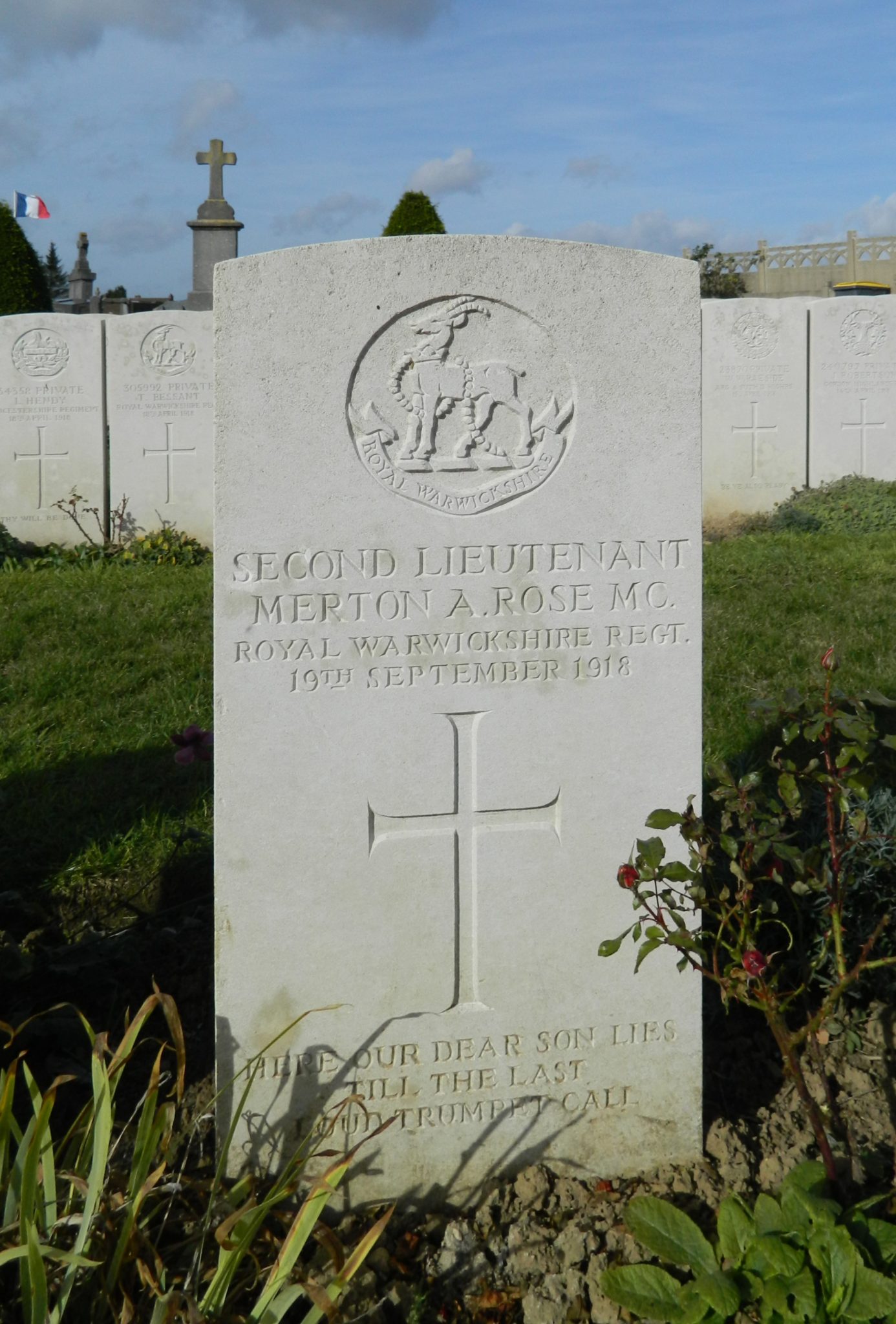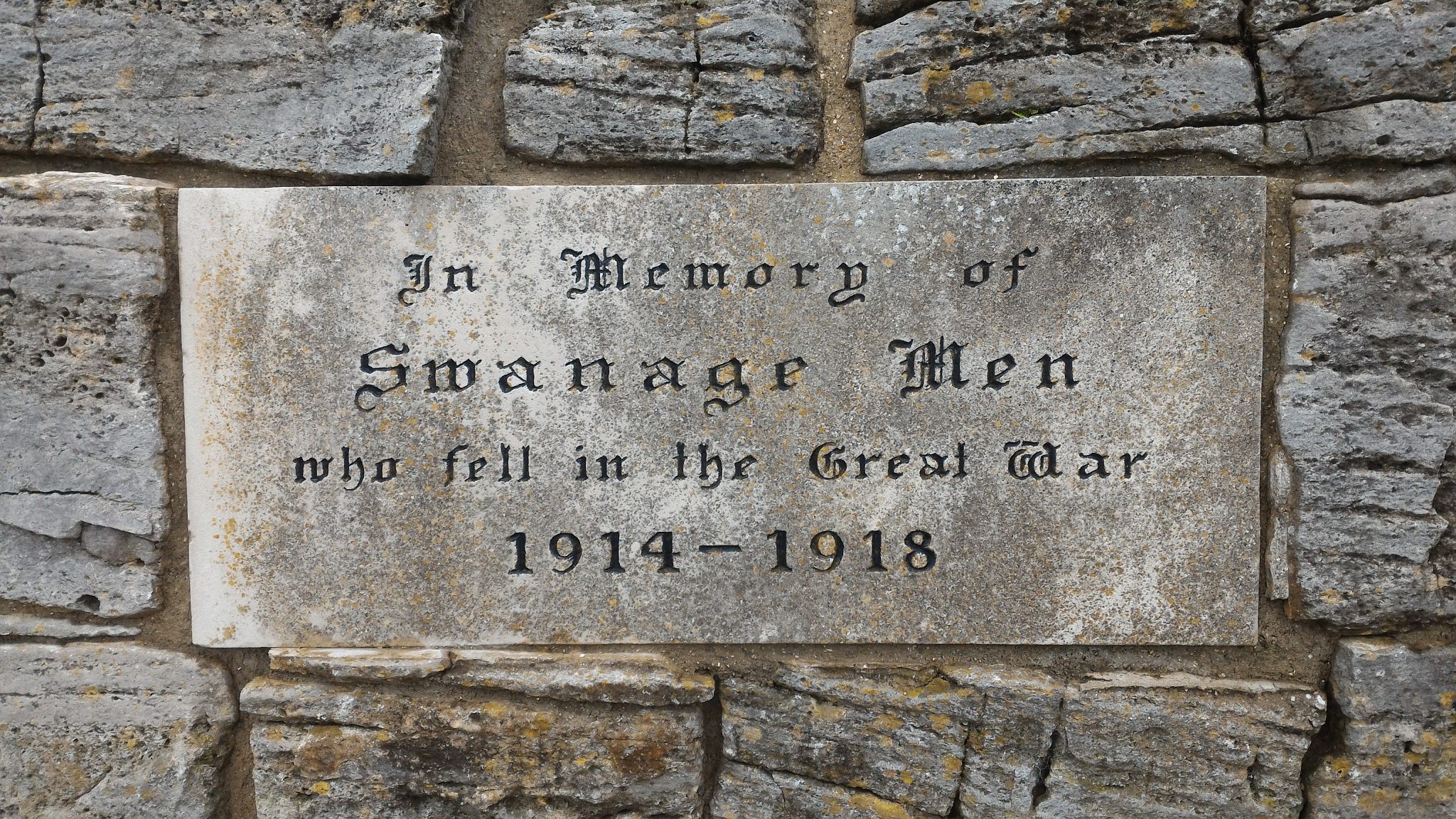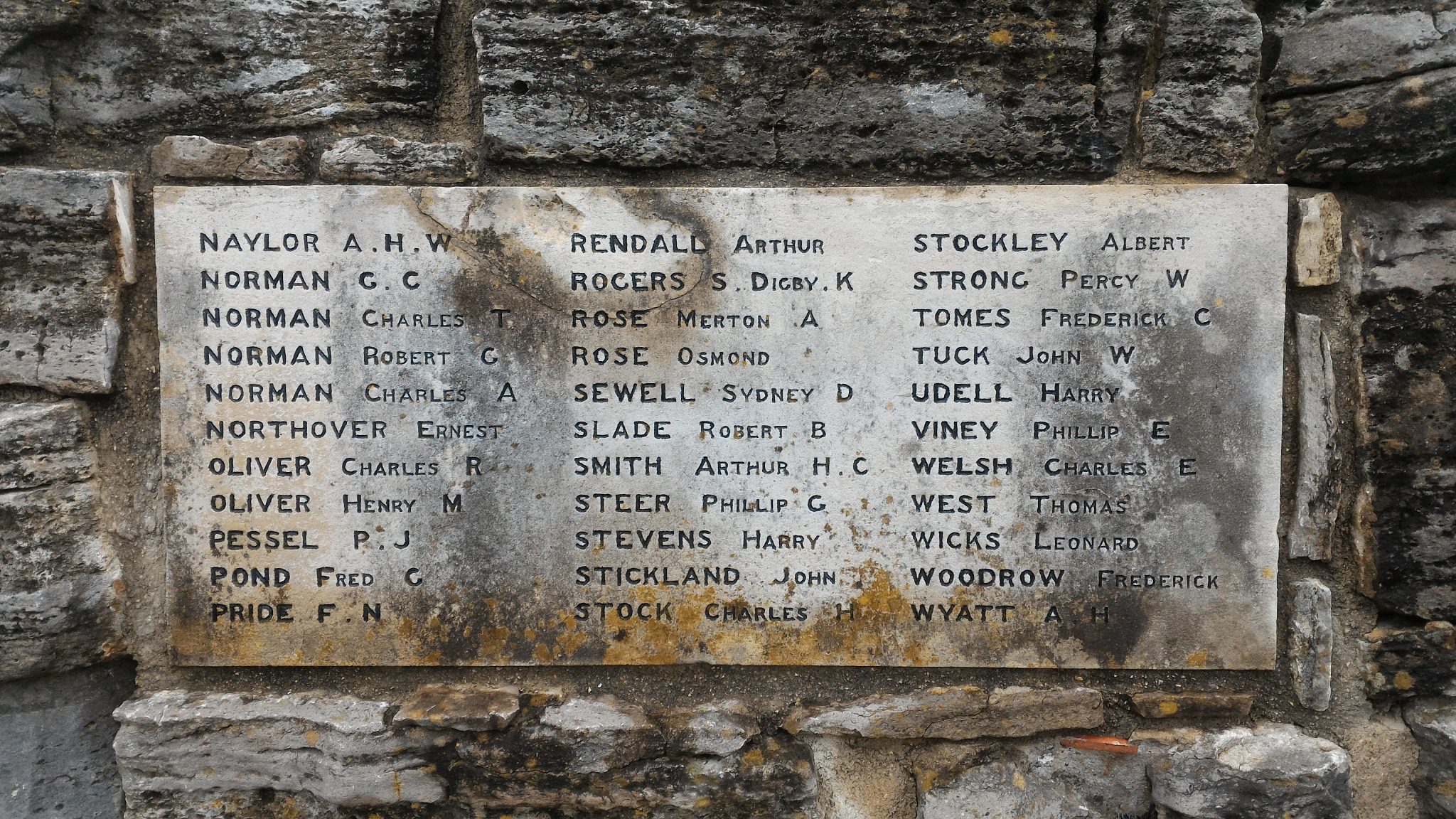Merton Alfred Rose
22nd September 1893 ” 19th September 1918
2nd Lieutenant Merton Alfred Rose MC, of the 2nd/8th and 5th, attached 2/6thRoyal Warwickshire Regiment, died of wounds on 19th September, 1918.
Family Background
Merton’s family were Dorset people. In the early 1800s the distaff side of the family were from the Dorchester and Weymouth areas and the spear side roots were in the Isle of Purbeck.1
His grandparents, John and Mary Goodchild Masters (born in 1827 and 1833), lived in the hilltop village of Kingston, overlooking the village and remains of Corfe Castle, nestling below in the great notch cleaving the Purbeck Hills. It was there that Merton’s father, Lambert Horfield Rose, was born in 1857 and lived his formative years.
Lambert was an agricultural labourer by the age of thirteen. He then learned his life’s trade from his father who was by this time recorded as a watchmaker. In this he was eventually joined by his brother Alfred, his junior by 13 years.2 Lambert met and married Elizabeth Jane Legg.3 Although originally from Weymouth, she had been working in the early 1880s as a domestic servant in Portsmouth. They wed on the 20th of November, 1888 in the Parish Church at Melcombe Regis, Weymouth, which was Elizabeth’s home church.
The family ran a watch, clock and jewellery shop in Swanage. John Rose
was a clock and watch repairer and when he died in 1878 Lambert continued as a watch jobber’ until late 1886, when he left Kingston and started his Swanage business in a cottage next to the Town Hall. In 1896 he moved to newly built premises across the road at No. 2 York Buildings, later moving to Compton House further down the High Street in 1899. Lambert Rose also traded at various times as an optician, clothier and cycle dealer a curious mixture!
[a photograph, reproduced below] 4 taken in the early 1920’s shows Alvan E. Rose, the son of the founder, outside Compton House shortly before the business moved yet again, to Station Road in 1924, next door to the Central Garage (now Woolworths [1993]), also owned by Rose Bros. Lambert Rose died in 1934, but the jewellery business was continued by his son Alvan and later by his granddaughter Daphne and her husband Morris Ostafew until finally closing in October 1985. 5
Alfred 6 was also involved in the business. In addition to the trades quoted, a range of documents variously describe Lambert as a watchmaker, clockmaker, silversmith and jeweller.
Lambert and Elizabeth had eleven children, of which Merton was the fifth. His four sisters and six brothers are as follows:
Eviline Lena b.1889 d.1971
Gladys Winifred, b.1890 d.1960
Lambert Horfield, b.1891 d.1962 7
Alvan Edward, b.1892 d.1950 8
Merton Alfred, b.1893 d.1918
Osmond Arthur, b.1895 d.1919 9
Cicely Irene, b.1896 d.1961
Cyril Drummond, b.1898 d.1947 10
Gwendoline May, b.1899 d.1902
Neville Dugdale, b.1902 d.1963 11
Reginald Leonard, b.1903 d.1971
The family lived above the shop, and although the building was extensive,12 space must have been restricted for such a large brood. By the Census of 1911, the three oldest children had left home and, sadly, Gwendoline had died in July 1902, aged three.
The family’s children attended Swanage Council School. The older children would have started school at the old National/Board School, opened 1835.13 This was replaced in 1897 by the new Council School building, pictured. It had capacity for 600 children (juniors and infants). Harry Powell Padmore was master and Miss Annie Willett, infants’ mistress.14 Mr.Padmore had been head at the old school.
The new Swanage Council School of 1897. Date of photograph unknown. Courtesy of Belinda Norman
The Western Gazette of Friday 27th December 1907, records Merton amongst those who were awarded medals by the headmaster, Mr. H. P. Padmore, for 100% attendance in the year 1906 to 1907. His brother Osmond gained a SecondClass medal for achieving an attendance of over 97%.
At the age of thirteen, Merton moved up to the Secondary School in Poole. The school, on Kingland Road, Seldown, was newly built and he would have been in the first intake (1907). He completed three years there before returning to his old elementary school as a pupil teacher. He would spend two years in that post.
The pupil teacher would act as a classroom assistant and learn the trade’ from observation and being introduced to increasing responsibilities. The school would receive a small annual payment for each pupil teacher and the headteacher gave further tuition and training before and after the school day. Part of the school week would also be given over to study; pupil teachers were limited by law to a maximum of 20 hours of classroom work per week. Most areas also had pupil teacher training centres where day-release and evening classes were held, though it is not known whether Merton attended one. We do know that Merton used his time out of the classroom to study for his Oxford Senior Examination, which he took and passed in the 1911-1912 school year.
This exam was designed to test a wide range of abilities at school leaving age. There was no prescribed curriculum and so a broad understanding of the subjects tested was required. It was in two parts. A Preliminary paper examined English Grammar and Orthography, Arithmetic, Geography, and an outline of English History. If this was successfully negotiated, the candidate had to pass at least two of the following sections in a second paper: A. English (History, Literature, Geography, Outlines of Political Economy and English Law); B. Language (Latin, Greek, French and German); C. Mathematics (Pure Mathematics and Mechanics); D. Physics (Natural Philosophy, Chemistry, Vegetable and Animal Physiology, Geology, and Mineralogy); E. Drawing and Architecture; F. Music. As can be seen, this was no small feat.
The Oxford Seniors pass qualified him to apply for a place at a teacher training college and at the end of the 1912 school year, having succeeded in his examinations, he left Swanage to begin full-time study.
Student Life; Winchester Training College
19121914
Students would have a full timetable that occupied them from early morning until lights out’. There were morning and evening Chapel services each day, but space was given to sport, social events and, as we shall later see, military responsibilities. The lecture curriculum was broad. At the centre were the mainstays of what today we call numeracy and literacy, but lectures would encompass art, psychology, hygiene, literary criticism, history, music, science, psychology, education, and speech. Extended periods of practical teaching were also undertaken at one of the local Practising Schools. (Find out more about the Training College here)
The students periodically produced an inhouse publication that carried reports and news of student happenings, sports results and sometimes creative pieces from those of a more literary bent. Merton is mentioned by name a couple of times in relation to the footballing life in College: in The Wintonian 19101914 collected issues, Football Notes informs us that, in a match against Southampton YMCA,
The game was fairly even, but we obtained the lead in the first ten minutes through Simmonds and M A Rose.’15
Then, later in the 2nd XI notes: Special mention may be made of (M A) Rose who heads the list of goal scorers.’ By October 1913, he represented the 1st XI at football, playing in the centre.
Academically, Merton was examined on entry to the college and was listed as 7th out of the intake of 32 students. At the end of his first year he was graded as a Class II student, on a scale of I to III. Unfortunately, the second year, Summer 1914, results are missing from the college Mark Book.
Merton’s Service papers tell us that, like many students, he enrolled in the B Company of the 4th Territorial Battalion, Hampshire Regiment”something the College authorities not only supported but encouraged.16 His Attestation (enlistment) date was 11th September, 1912, which would have been in the first week of his studies at College. The men were subject to military discipline at all times and underwent thorough training. For those students serving in B Company, provision was made in the timetable to accommodate the additional commitments.
The College Company in 1907. See footnote 11
The College’s commitment to the military may be seen in the fact that the Principal, Canon Henry Martin,17 who had retired immediately before Merton began his course, was Major in the 1st Hampshire Volunteer Corps, and the new Principal, Canon Ernest Wainwright,18 was also a Captain incommand of the administrative centre of the 4th Battalion Hampshire Regiment Headquarters on Castle Hill, Winchester. The College campus also included an Armoury and there was a College field at Teg Down set aside as a rifle range for shooting practice.
This relationship between clerics and military may seem strange from a modern perspective but, at that time, it was very much in keeping with the militarised mindset of the British Empire, and the theological movement often referred to as muscular Christianity’.19
At War
Merton’s time in the Army is complex, with a number of moves between different Battalions and Regiments. On August 4th 1914 War was declared. The College Summer term had just finished and B Company were on the annual camp at Bulford, Salisbury Plain. At the time it comprised some 104 men of which 40 were Seniors (second year students). The men were enlisted (i.e. under full Army orders and discipline) and so at the disposal of the Command. When war was declared, B Company were;
immediately mobilised and remained under canvas at Bulford for several weeks.20 They were joined by Principal Wainwright, who held the rank of Captain, and by Bernard Goddard, one of the tutors, who was a Lieutenant in the Company. Early in September the Company returned to Winchester and were billeted in the college buildings, the War Office paying the college 3d. a night for each man and supplying each with rations.’ 21
This is a shorthand account. In detail, they were moved from the Bulford Camp to Hilsea, Portsmouth, where they were stationed from August 4th to 10th before returning to Salisbury Plain. There they trained at Bulford Camp, Sling Plantation, Hamilton and Bustard Camps. They then moved back to their familiar College surroundings, which were pressed into use as billets, on October 5th.
Bulford Camp, Salisbury Plain. Copyright unknown.
We need to note, however, that Merton was temporarily unfit for service’ on 5th August 1914” the day after the Company moved to Portsmouth. Territorial soldiers agreed to serve on home soil unless they volunteered for overseas service. The vast majority of his college friends who had been in B Company volunteered to serve overseas and, presumably because of his illness, Merton was not present when this took place. After training, they left for India in two waves: those transferred to the 1/4th Battalion to Poona on October 9th, and those in 2/4th to Quetta22 on December 12th.
Merton served the first 20 months of the war on home duty. His surviving Army records do not clearly indicate in which Hampshire battalion he served during this time, so it is difficult to know what he did or where he was during this time. Two rubber stamp impressions on documents, dated 7th and 9th February 1916 show he was probably in the 84th Provisional Battalion, more commonly known as the 2/6th (Duke of Connaught’s) Battalion of the Hampshire Regiment. These same documents also give, more certainly, his location at that time: Blyth, on the Northumberland Coast, suggesting coastal defence was one of his duties. From other histories, postings of this battalion through this time include Petersfield, Bournemouth and Hursley Park.
It was while at Blyth, on 7th February, that he would volunteer for overseas service by signing the Imperial Overseas Service form. The second form, dated 9th February, is an application to be transferred to the 3/16th Battalion London Regiment. This document also tells us that Private Merton Rose was 5ft 6½in tall and had a 32in chest.
His new unit had just moved from Richmond to Winchester, bringing Merton back to his old haunts. In April the Battalion name was changed from 3/16th to simply to 16th Battalion London Regiment. It was around this time that his record shows two minor misdemeanours while stationed at Tidworth on the Hampshire/Wiltshire border: on Tuesday 11th April 1916 he was found gambling in the barrack room, for which he was admonished. This incident is marked R.W.”Recorded Warning. The second infringement was a little more serious: the following Tuesday, he was late returning from leave, arriving back at barracks at 8am rather than before midnight. The punishment for this was 3 Days C.B.’ (Confined to Barracks). The hearing and punishments took place on 22nd April.
He was transferred to the 2/8th Battalion Royal Warwickshire Regiment on 16th May. His character, on transfer is described as Very Good’.
On the morning of Sunday, May 22nd 1916, the Battalion left their camp at Perham Down in Wiltshire, marching the short distance to entrain at Ludgershall station, en route to Southampton. As Merton began his journey to the Western Front, it is comforting to know that he would be with friends: fellow WTC students Albert Lewis (with whom he may have crossed paths numerous times in the Army up to this point) and Joseph Sharp were also making the same journey. All three had overlapped at college in the 1913-1914 academic year. At 7pm, 23 Officers, 855 Other Ranks boarded the paddle steamer Princess Clementine23 at Southampton Dock, bound for Le Havre, landing there the next morning at 3am. They had landed in France as part of the 182nd (2nd Warwickshire) Brigade in the 61st (2nd South Midland) Division, heading into battle.
Princess Clementine
The Battalion travelled the 150 miles to L’Ecleme by train. Here, encamped 5 miles northwest of Béthune, they trained and drilled. Towards the end of the month, they would see their first action in the Battle of Fromelles, moving to Neuve Chapelle, near the France“Belgium border. There, through most of July, the men would be in trenches, suffering moderate casualties. Monthend casualty totals are not given in the Battalion War Diary so losses are difficult to quantify.
Familiar to all infantrymen in the Great War, the 2/8th fell into the repeated rotation pattern between trench and billet through to the end of October. All trenches that they occupied in this period were in the general Neuve Chapelle and Fauquissart area. The whole of November was given over to resting, training and fatigues duties. From the beginning of December, fatigue parties were engaged on or just behind the front line, constructing wire entanglements and salvaging. From the 16th to 20th trench duty was again carried out before falling back on the 20th. Christmas was spent in billets and under canvas at Hédauville, well away from their work of the last few months, but near the Somme”a sign of the road that lay ahead. 24 The Diary records 25th CHRISTMAS DAY”Communion Services”entertainment for the troops.’
Church at Savy, near St Quentin, 25th April 1917. © IWM (Q 2088)
The New Year dawned and saw the Battalion returning to the trenches, this time in the Somme region.25 The trench/relief cycle took them through January, though almost all of February was spent in further training. In midMarch there were heavy engagements at Ablaincourt and Falvy with significant casualties. In April and through to May they were fighting in the Villeveque and Savy areas. On the May 8th Merton left his Battalion and returned to England: his request for a temporary Commission had met with success. We do not know in which Officer Cadet Unit he trained, nor how much of his time in England was allowed as home leave.
The London Gazette, which carried notifications of all appointments to Commissions, records
War Office, 23rd November, 1917. TERRITORIAL FORCE. The undermentioned, from Officer Cadet units, to be 2nd Lts. 31st Oct. 1917: ” Infantry R. War R. Merton Alfred Rose’
Second Lieutenant M. A. Rose returned to France on October 31st, 1917. Not unusually, he was assigned to a different unit, in his case the 5th Battalion Warwickshires.
Merton’s exact movements now become difficult to trace. At some unrecorded date between his return to the Front and his death in September 1918, he was Attached’ (i.e. temporarily transferred) to the 2/6th Battalion Warwickshires. This may have happened in late February when a number of men also made this move, but we do not know. With such uncertainty, attempting to follow in detail what he may have been involved in, is of doubtful value. All we can say is that in 1918, if he were in 2/6th Battalion, he would probably have been involved in the following actions:
The Battle of St Quentin, 2123rd March 1918
The Actions at the Somme Crossings, 2425th March
The Battle of Estaires, 911th April
The Battle of Hazebrouck, 1215th April
The Battle of Bethune, 18th April
The next firm evidence of Merton’s war is in the 2/6th Battalion War Diary for September 3rd. 26 They were on the north bank of the River Lys, west of the Still Becque tributary. This was not trench warfare; the Battalion were carrying out open, mobile attacks in a rapidly changing situation, which required adroit decisionmaking on the part of Officers. Lt Rose was commanding No. 10 Platoon, C Company, with his Battalion advancing from west to east. Following the War Diary in detail helps us to see how this progressed.
The reader will find it easier to make sense of the movements by being able to read map positions (e.g. G.17.a.5.6), which are given as follows:
(i) the area letter: G is to the west of the heavy vertical line, H to the east (the letters are not shown on the heavily cropped maps)
(ii) the number of the large 1km square, given at the centre of each square
(iii) lowercase letter ad: these are the quarters of the 1km square, top row is ab, and bottom row cd
(iv) single digit 100m Easting then Northing coordinates, as in Ordnance Survey mapping
Example: The road junction at Pt. de la Boudrette in the following map is at G.10.d.4.4.
River Lys and Croix du Bac area, mapped in June 1918. The Still Becque tributary is seen running north from the Lys past la Boudreille (the stream is also known as Stilbecque and Steenwerke). Reproduced with the permission of the National Library of Scotland.
The Diary picks up the events of that day;
Battalion War Diary from 3rd September, 1918
During the night, D Company pushed further east, past Merton’s C Company who then turned to the south. At 6am on the 4th, we read
C Company had managed to bridge the river at G.17.a.5.6. during the night and early morning, and pushed one platoon across to the south.’
The first objective was H.8 Central (position is at the figure 8′) and then the copse and two houses (centre right).
The bridge was used to move Platoons from other Companies across the river, allowing an advance on the south bank of the Lys towards Bac St. Maur, which fell during the 4th. The movement now was further east and, initially, south. Merton and C Company were tasked with clearing out resistance south of Bac St Maur (H.19 Central). Here C Company made a considerable advance.’ They then pushed northeast up the Rue Rataille. 27 By dawn on the 6th Merton and his men were in Fort Rompu (H.8.c.0.3) and there were ordered to advance up the Rue de la Lys to H.8 Central, take it and clear out the enemy holding the copse and houses to the south of it. 28
The Diary records:
This had been a most successful day for the Battalion. By evening the 2/7th Battalion Warks passed through their lines after dusk and relieved A, B and D Companies. C Company were left holding the line until relieved the following day by 9th Battalion Northumberland Fusiliers.
The actions of 3rd to 6th September carry no casualty information and so Merton’s wounding is not mentioned. He must have been shot during the final stages of the assault on the houses and orchard: no further combat action was recorded that or the next day.29 He was evacuated 20 miles west to No.54 Casualty Clearing Station at AiresurlaLys. 30
Merton was awarded the Military Cross. His citation reads:
2nd Lt. Merton Alfred Rose, 5th Bn., R War. R., T.F., attd. 2/6th Bn., T.F. He carried out a reconnaissance personally in broad daylight under heavy fire, and then led his platoon forward with great gallantry and successfully outflanked the enemy’s position. He was afterwards severely wounded while attending to a wounded man. 31
Second Lieutenant Merton Alfred Rose died of wounds on 19th September, 1918, at No. 54 Casualty Clearing Station. 32 He is commemorated on the Swanage War Memorial. His name is joined by that of his younger brother, Osmond Arthur Rose, 2nd Lieutenant of the 5th Battalion Dorsetshire Regiment, who died of appendicitis on 12th September 1919 while on active service in Egypt.
The family built and owned a block of buildings near the seafront end of Station Road, Swanage, and named them Mermond Place’ after their two sons who died in War Service. It is still known by that name today.
With special thanks to family members Nick 33 and Jan Ostafew for family background, and to Karin Bamborough 34 for providing the portrait of Merton.
Researcher and Author: John Vickers
Footnotes
[1] His grandfather was born in North Cadbury, Somerset, but lived most of his life in the Isle of Purbeck, having moved there before the 1851Census, where he is one of three men listed as Rail Lab.’ living as boarders in Kingston. As the Swanage Railway was not authorised by Act of Parliament until 18th July 1881, it is thought that he must have been working on the western end of the nevercompleted Swanage Pier and Tramway Company’s tramway, planned to carry stone from quarries near Kingston to the pier at Swanage. [With thanks to Bob Diffey of Purbeck Past for this unpublished information on the tramway]
[2] Lambert’s family was extensive: he had 3 sisters and 5 brothers. He was the third child. Births were 1854 to 1870.
[3] Born 15th August,1862 in Weymouth, Dorset.
[4] Copyright unknown
[5] Swanage in Old Picture Postcards, David A. Haysom and John Patrick
[6] Lambert’s 1901 Census clearly shows Alfred living at the shop and both brothers are listed as watchmakers and working on their Own Account’ (i.e. selfemployed). However, Alfred also appears on a 1901 Census return as working on own account as a Watchmaker Shopkeeper’ and employer, staying or living in Boscombe, Bournemouth.
[7] Lambert Horfield Rose (Junior), known as Brun’, was a Sergeant in the Royal Flying Corps
[8] Alvan, a builder’s clerk, married Gladys Francis Hill. He served as a Sergeant in the Royal Army Medical Corps in WWI. He was wounded in Belgium and, very unusually, his wife, Gladys Francis (née Hill), succeeded in travelling to Belgium to visit him in hospital. They had a son, David Edward Rose who trained as an actor but later became a TV producer His early work included Z Cars and Softly Softly. He was appointed head of Regional Drama at BBC Pebble Mill in Birmingham in 1971. During his time at Channel 4, Rose was responsible for the making of 136 films, half of which received cinema screenings, investing in a third of the feature films made in the UK during 1984. By 1987,Channel 4 had an interest in half the films being made in the United Kingdom. Rose is credited by many as being a significant figure in the regeneration of British cinema. https://en.wikipedia.org/wiki/David_Rose_(producer)
[9] Osmond Arthur Rose, 2nd Lieutenant Dorset Regiment, attached 4th Wiltshire Regiment.
[10] Cyril Drummond Rose, an accountant of 110 Chipstead Way, Woodmansterne, Banstead, Surrey, died on or since 20 October 1947 at some place unknown’ (Probate). He disappeared without trace on that day, leaving a suitcase at Victoria Station.
[11] Became owner/hotelier of The Manor House Hotel, Studland, Dorset”now The Pig on the Beach’ [2018]
[12] Recorded in the 1911 Census as seven rooms not including the shop or bathroom
[13] For approximately 350 children (mixed and infants). (Kelly’s Directory, 1889 and 1895)
[14] Kelly’s Directory 1911
[15] Rose always had to have initials or forename attached to differentiate him from fellow student H W Rose, who also studied there
between 1912 and 1914. They were not related.
[16] Prior to 1908, when the College students joined the Winchester Diocesan Training College Corps (also known as the 24th Rifle Corps), it was a Volunteer Company, and rules were much more relaxed. All students were expected to join.
[17] Honorary Canon of Winchester Cathedral, and Principal 1878“1912
[18] Honorary Canon of Winchester Cathedral, and Principal 19121933
[19] This had its origins in Thomas Hughes’ book Tom Brown’s School Days and was characterised by an emphasis on the outworking of the Christian gospel evidenced in qualities such as manliness, patriotic duty, moral and physical excellence, sacrifice and discipline.
[20] Source: College War Supplement, June 1916
[21] A History of King Alfred’s College, Winchester 18401980 by Martial Rose, p.66
[22] Presentday Pakistan
[23] A smaller contingent travelled on the steamer City of Benares. Both ships sailed and docked at the same times.
[24] This reference is to the Somme battlefield area, not the battle itself The First Battle of the Somme had ended 18th November 1916 and the Second would not start until 21st August 1918.
[25] This reference is to the Somme battlefield area, not the battle itself The First Battle of the Somme had ended 18th November 1916 and the Second would not start until 21st August 1918.
[26] The main entry in the War Diary for 3rd to 6th September 1918 simply reads, See Appendix A’. All references to the War Diary from this point on refer to Appendix A which is headed Narrative of Events from 3rd to 6th September 1918′ The Appendix is typewritten and runs to five foolscap pages.
[27] Rue Bataille’ in the Diary
[28] Location now given as 3351 Rue des Molfonds, 59193 ErquinghemLys, France. Coordinates 50.668155, 2.818184
[29] From then until the date of his death his Battalion were in billets, resting, cleaning up, training, parading and reequipping.
[30] Also known as 1/2nd London Casualty Clearing Station. Located at Aire from 16th April to 28th July and 14th August to 11th October 1918.
[31] Supplement to The London Gazette of Friday, the 10th of January, 1919. Number 31119, p.642
[32] Merton’s was an unusually long stay in a CSS. The role of the CCS was to treat a man sufficiently for his return to duty or, in most cases, to enable him to be evacuated to a Base Hospital. It may have been that his wounds were adjudged so severe that a move to a Base Hospital would have been fatal.
[33] Grandson of Alvan Edward Rose and great nephew of Merton Rose
[34] Wife of the late David Edward Rose who was son of Alvan Edward Rose
Sources
Ancestry (2018). Home page. [online] Available at: www.ancestry.co.uk [Accessed 2018].
British Newspaper Archive (2018). Western Gazette of Friday 27th December 1907. [online] Available at: www.britishnewspaperarchive.co.uk [Accessed 2018].
Commonwealth War Graves Commission, (2018). Home page. [online] Available at www.cwgc.org/ [Accessed 2018].
Haysom, D.A. and Patrick, J. (1993). Swanage in Old Picture Postcards. European Library, Netherlands: Europese Bibliotheek.
Imperial War Museum (2018). Church at Savy, near St Quentin, mined by the Germans, 25th April 1917, Q 2088. [online] Available at: www.iwm.org.uk/collections/item/object/205077783 [Accessed 2018].
Kelly’s Directory (1889). Kelly’s Directory of Dorsetshire 1889. [online] Available at: http://specialcollections.le.ac.uk/cdm/compoundobject/collection/p16445coll4/id/8879/rec/2 [Accessed 2018].
Kelly’s Directory (1895). Kelly’s Directory of Dorsetshire 1895. [online] Available at: http://specialcollections.le.ac.uk/cdm/compoundobject/collection/p16445coll4/id/8878/rec/19 [Accessed 2018].
Kelly’s Directory (1911). Kelly’s Directory of Dorsetshire 1911. [online] Available at: http://specialcollections.le.ac.uk/cdm/ref/collection/p16445coll4/id/8903 [Accessed 2018].
Lidgitt, P. and Naylor, P. Cemetery photograph.
The London Gazette. (1917). Third Supplement to the London Gazette of Tuesday, the 20th November, 1917. No.30395. [online] Available at: www.thegazette.co.uk [Accessed 2018].
The London Gazette. (1919). Supplement to The London Gazette of Friday, the 10th of January, 1919. Number 31119. [online] Available at: www.thegazette.co.uk [Accessed 2018].
National Library of Scotland (2018). British First World War Trench Maps 1915-1918, Belgium/France, WW1 Trench maps, (1:20K) 36.NW, 24 September 1917. [online] Available at: http://maps.nls.uk/geo/explore/#zoom=14&lat=50.6806&lon=2.8832&layers=101464966&b=1 [Accessed 2018].
National Union of Teachers. (1920). War Record 1914“1919. A Short Account of Duty and Work Accomplished During the War. London: NUT.
Rose family archives: personal contact.
Rose, M. (1981). A history of King Alfred’s College, Winchester 1840-1980. London: Phillimore.
Vickers, J. University of Winchester Chapel Memorial Rail and Swanage Memorial images.
Wikipedia (2018). David Rose (Producer). [online] Available at: https://en.wikipedia.org/wiki/David_Rose_(producer) [Accessed 2018].
| University of Winchester Archive “ Hampshire Record Office | ||
| Reference code | Record | |
| 47M91W/ | P2/4 | The Wintonian 1899-1900 |
| 47M91W/ | P2/5 | The Wintonian 1901-1902 |
| 47M91W/ | P2/6 | The Wintonian 1903-1904 |
| 47M91W/ | P2/7 | The Wintonian 1904-1906 |
| 47M91W/ | P2/8 | The Wintonian 1905-1907 |
| 47M91W/ | P2/10 | The Wintonian 1908-1910 |
| 47M91W/ | P2/11 | The Wintonian 1910-1914 |
| 47M91W/ | P2/12 | The Wintonian 1920-1925 |
| 47M91W/ | D1/2 | The Student Register |
| 47M91W/ | S5//5/10 | Photograph of 5 alumni in Mesopotamia |
| 47M91W/ | Q3/6 | A Khaki Diary |
| 47M91W/ | B1/2 | Reports of Training College 1913-1914 |
| 47M91W/ | Q1/5 | Report and Balance Sheets 1904- 1949 |
| 47M91W/ | R2/5 | History of the Volunteers Company 1910 |
| 47M91W/ | L1/2 | College Rules 1920 |
| Hampshire Record Office archive | ||
| 71M88W/6 | List of Prisoners at Kut | |
| 55M81W/PJ1 | Managers’ Minute Book 1876-1903 | |
| All material referenced as 47M91W/ is the copyright of The University of Winchester. Permission to reproduce photographs and other material for this narrative has been agreed by the University and Hampshire Record Office. | ||



